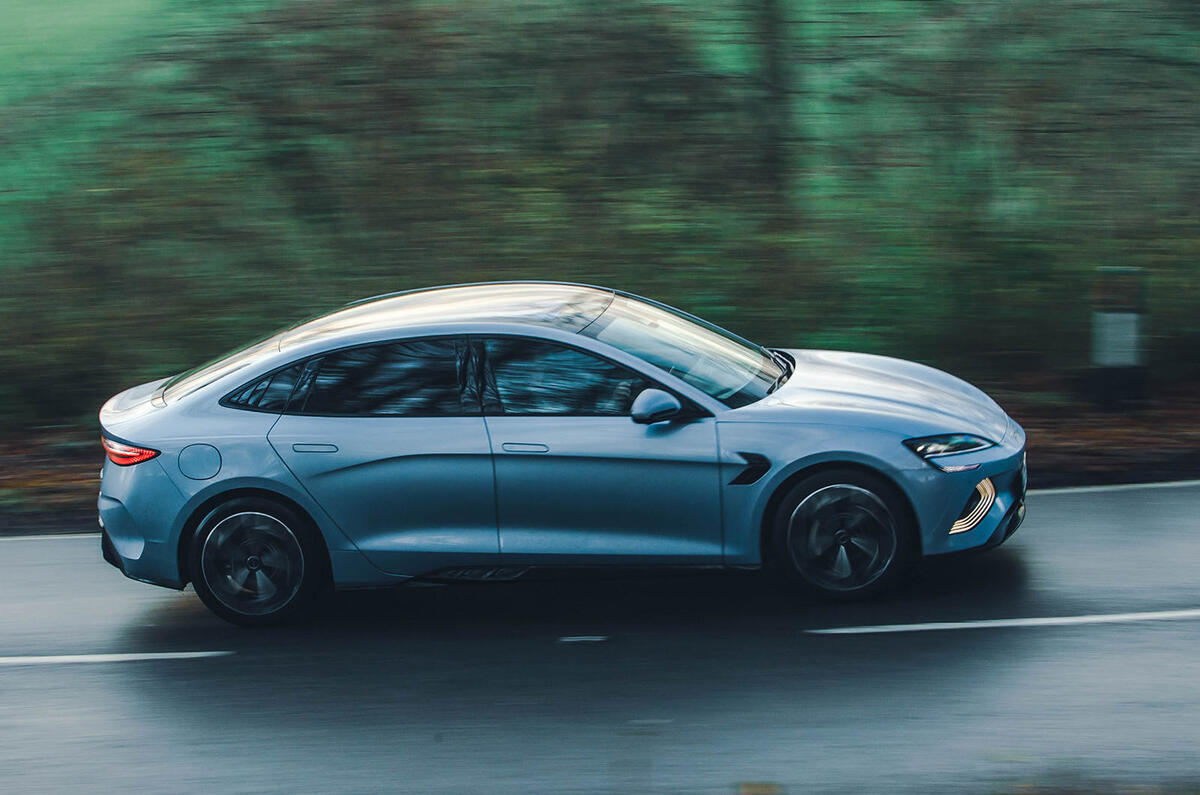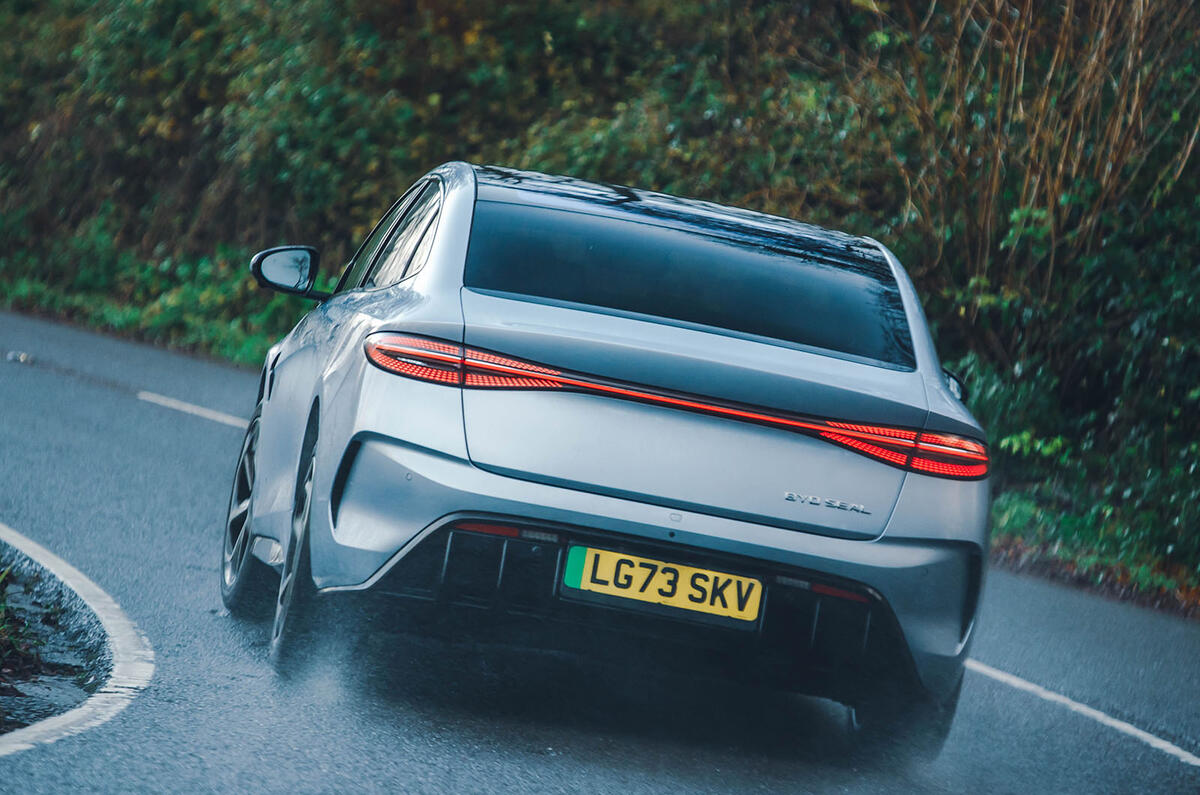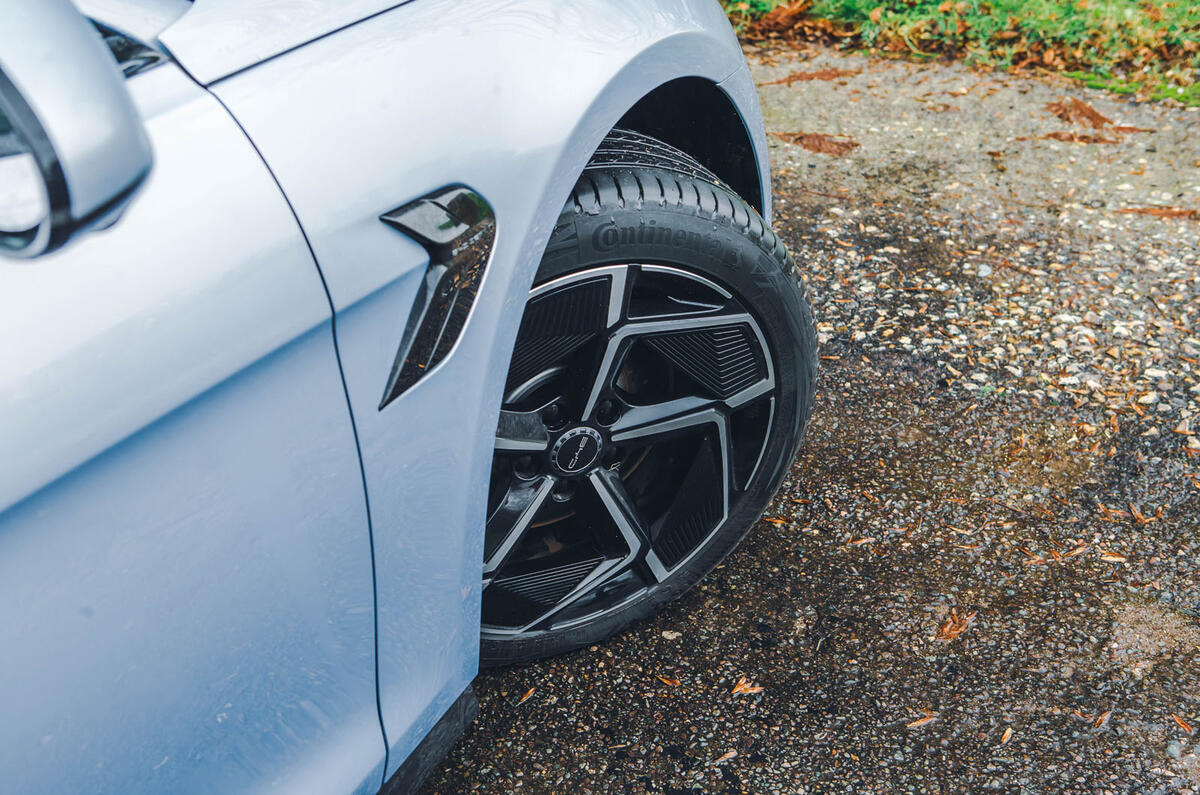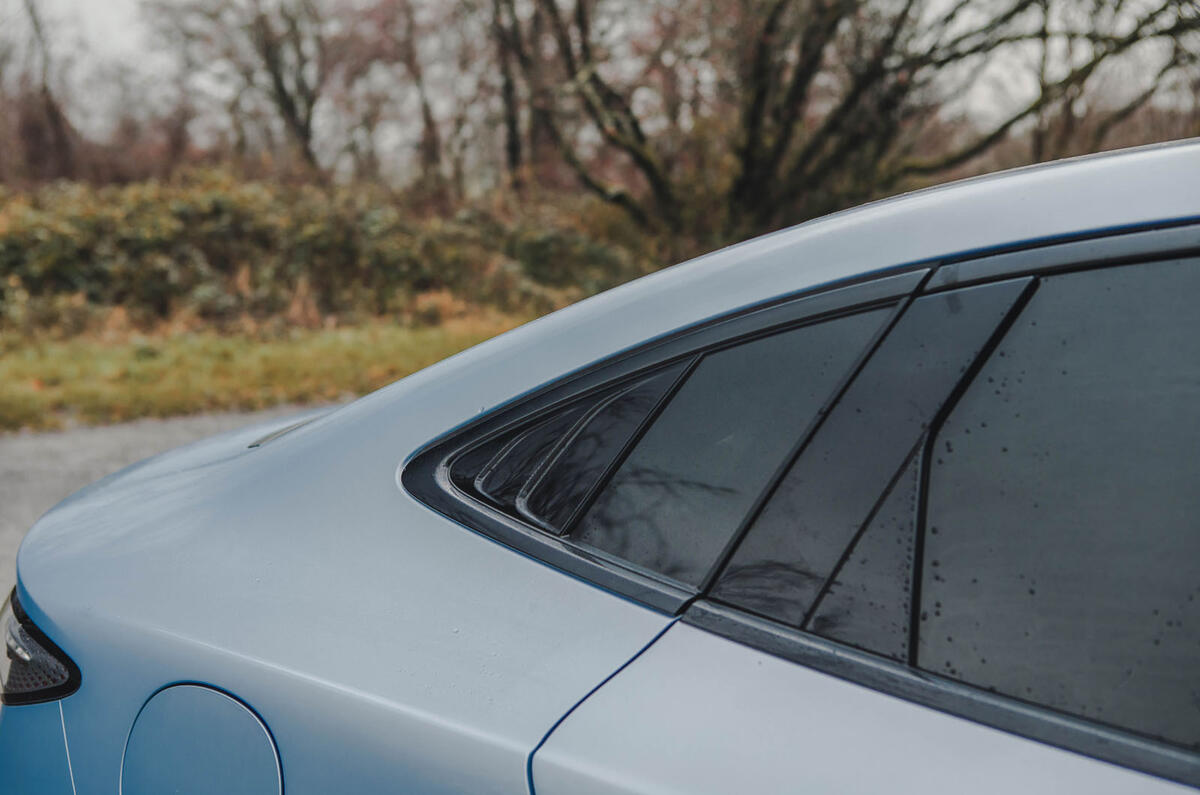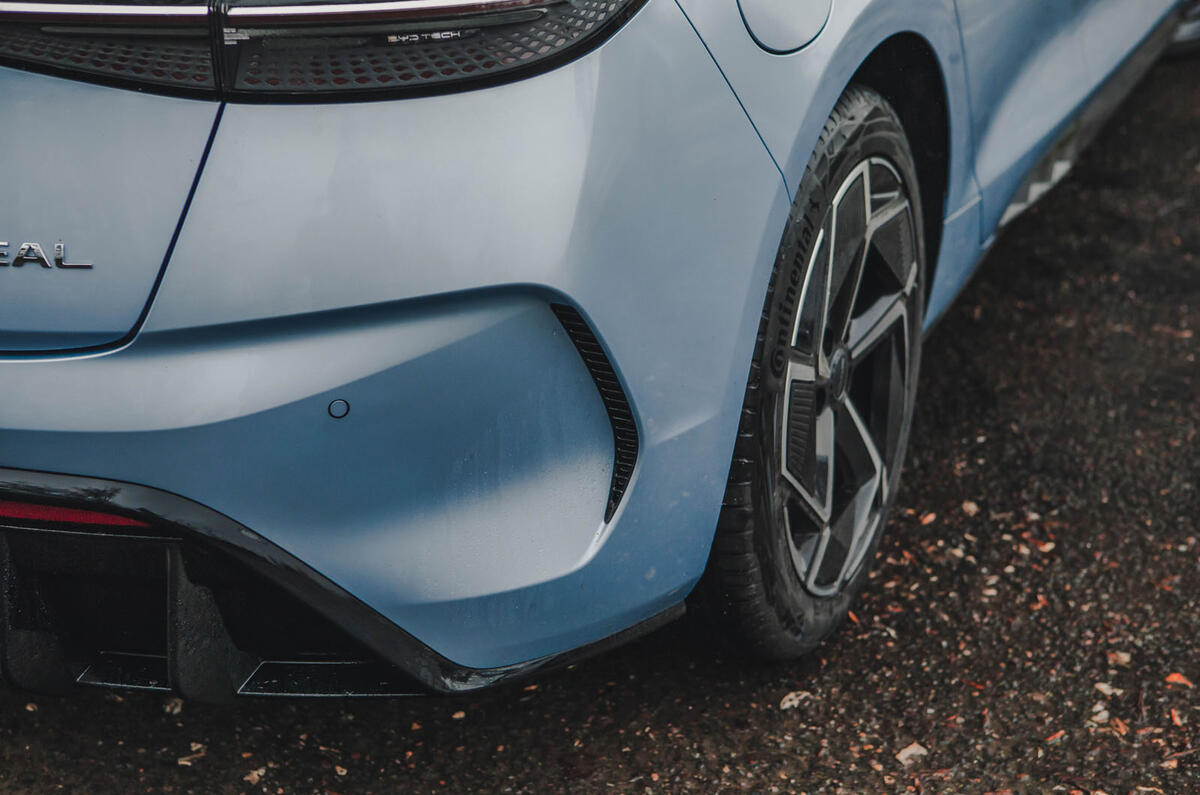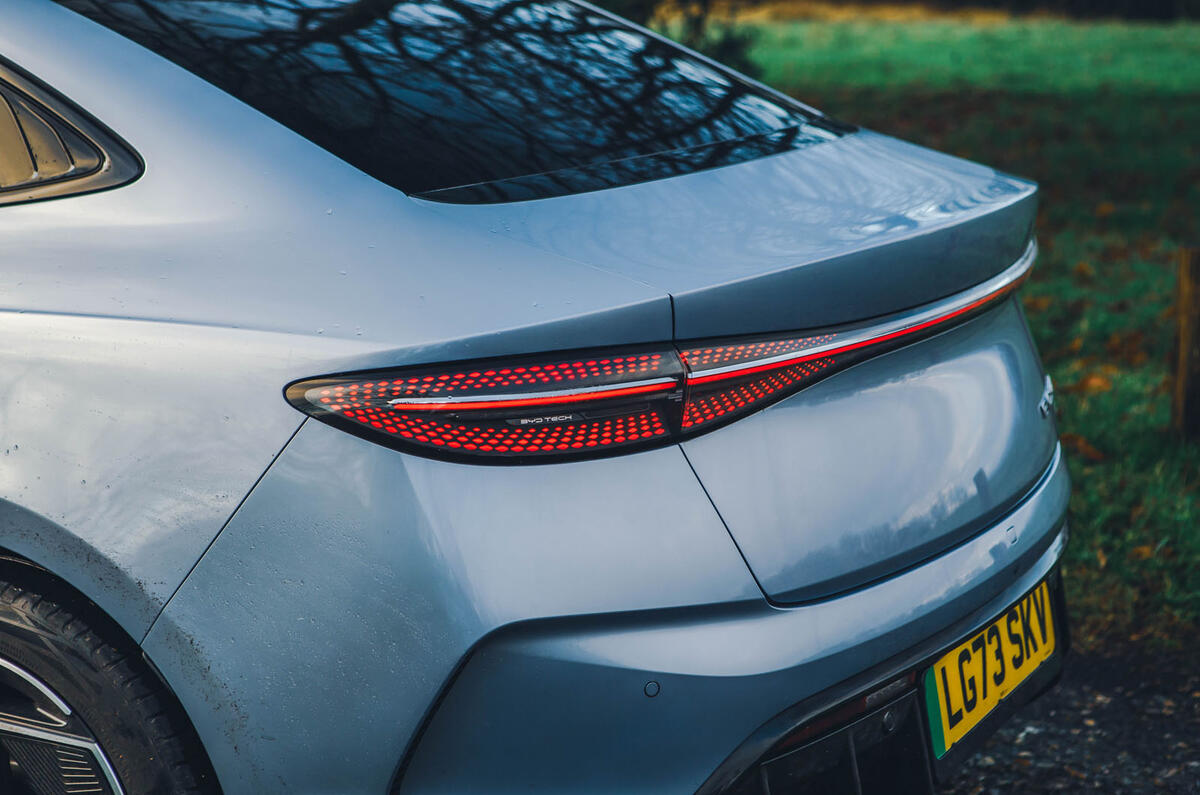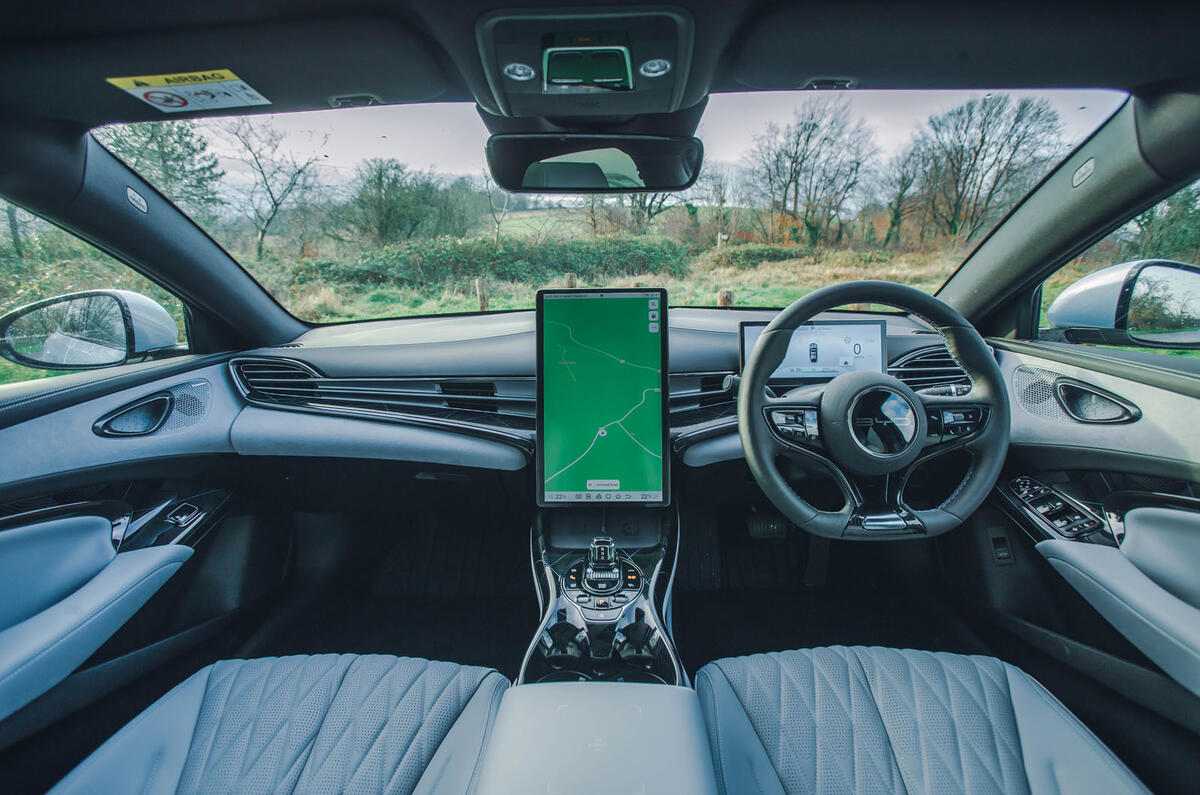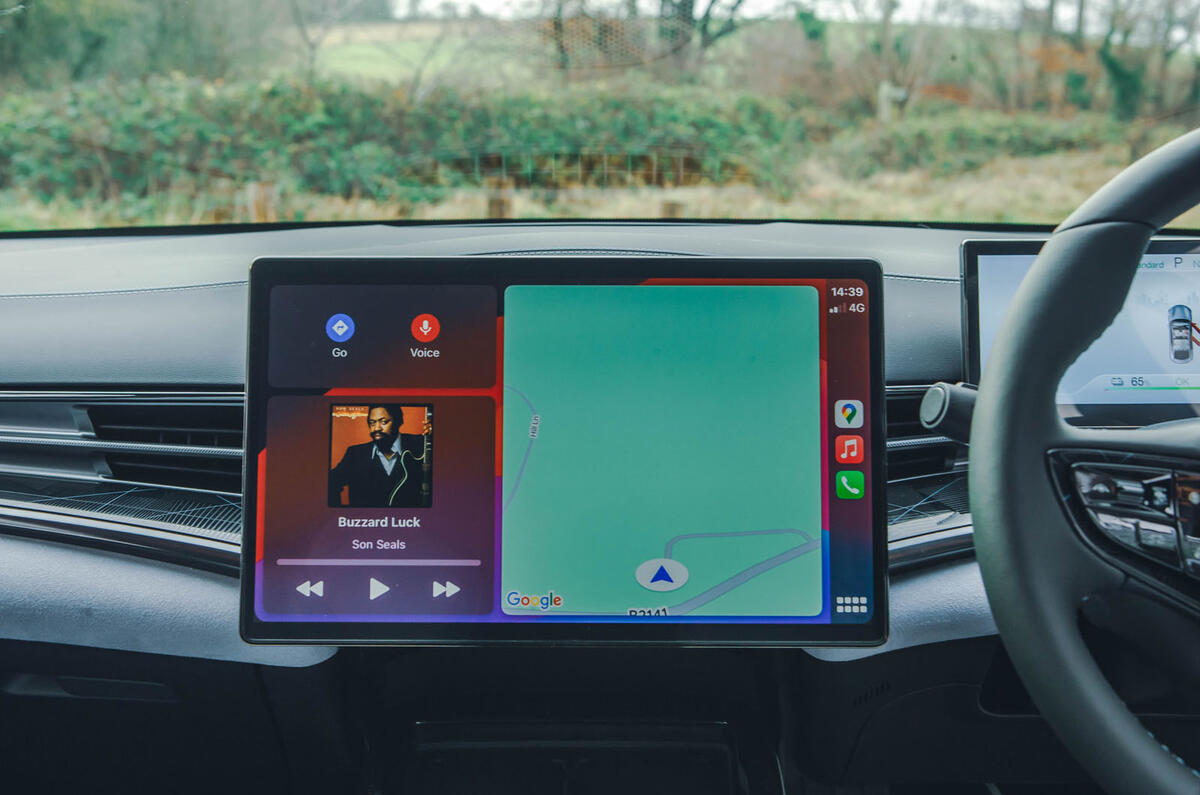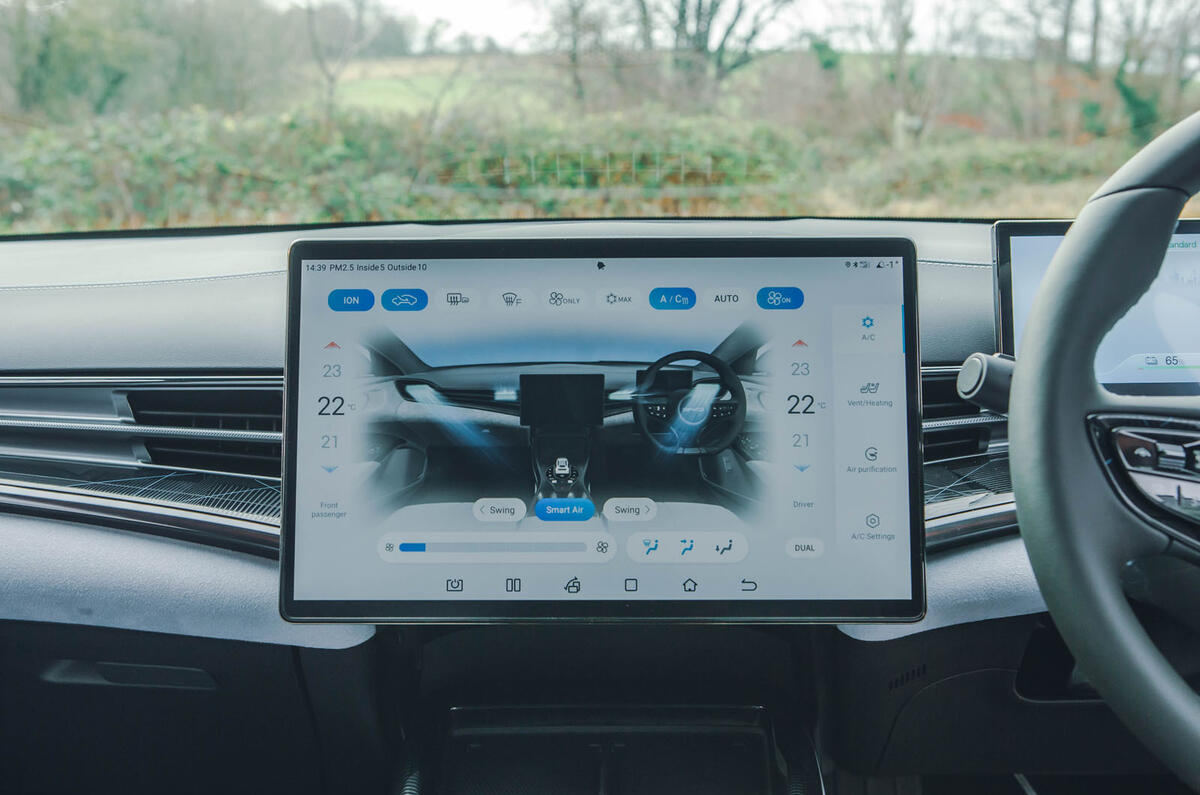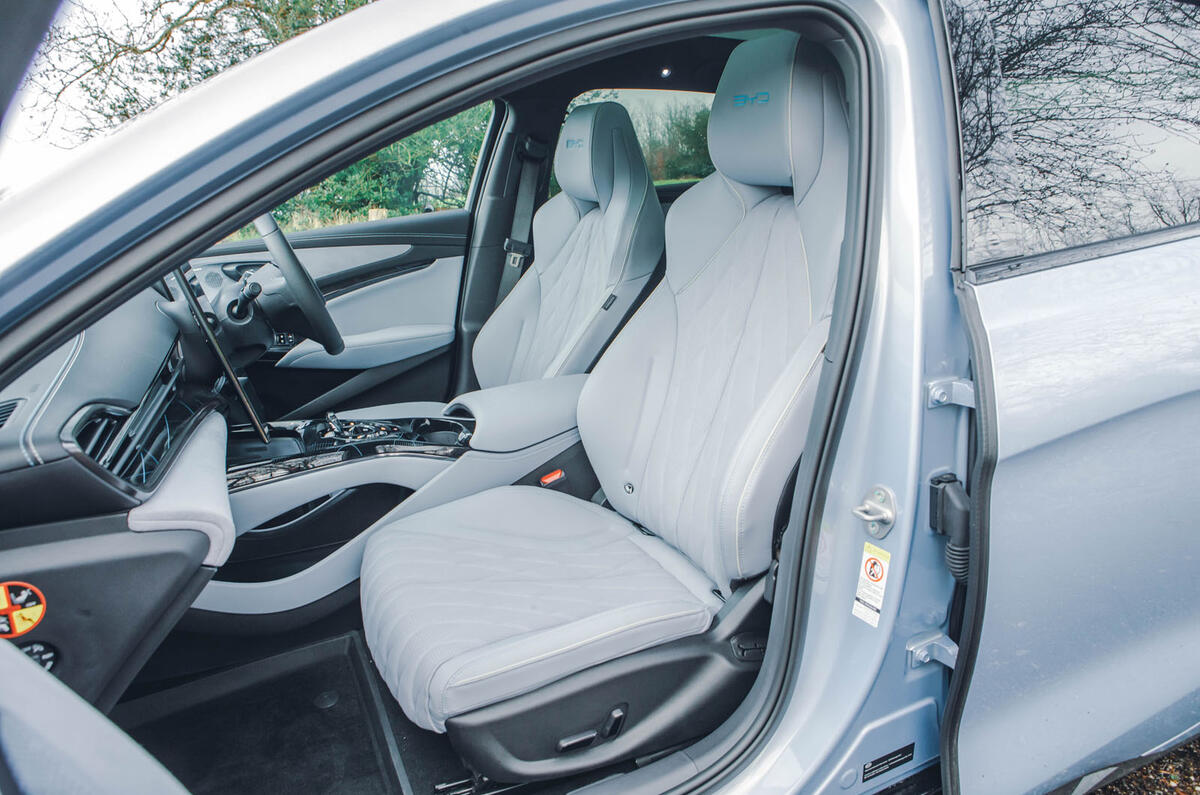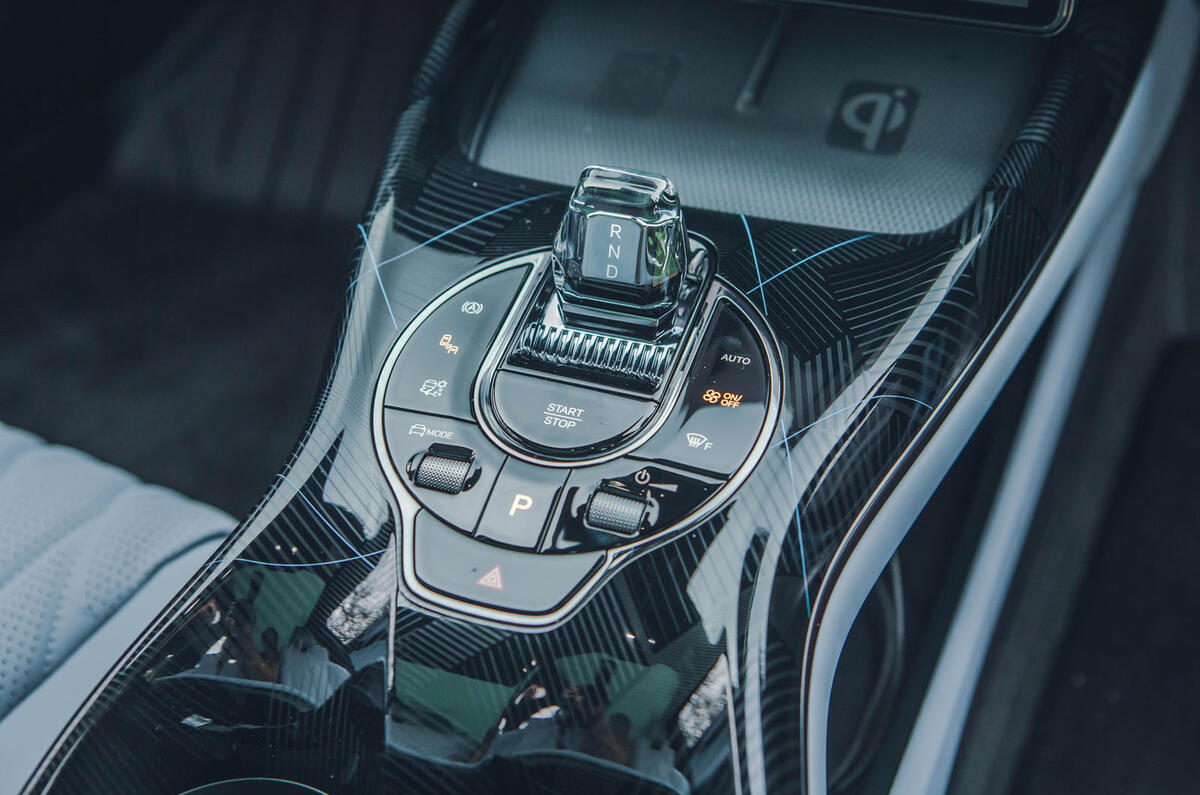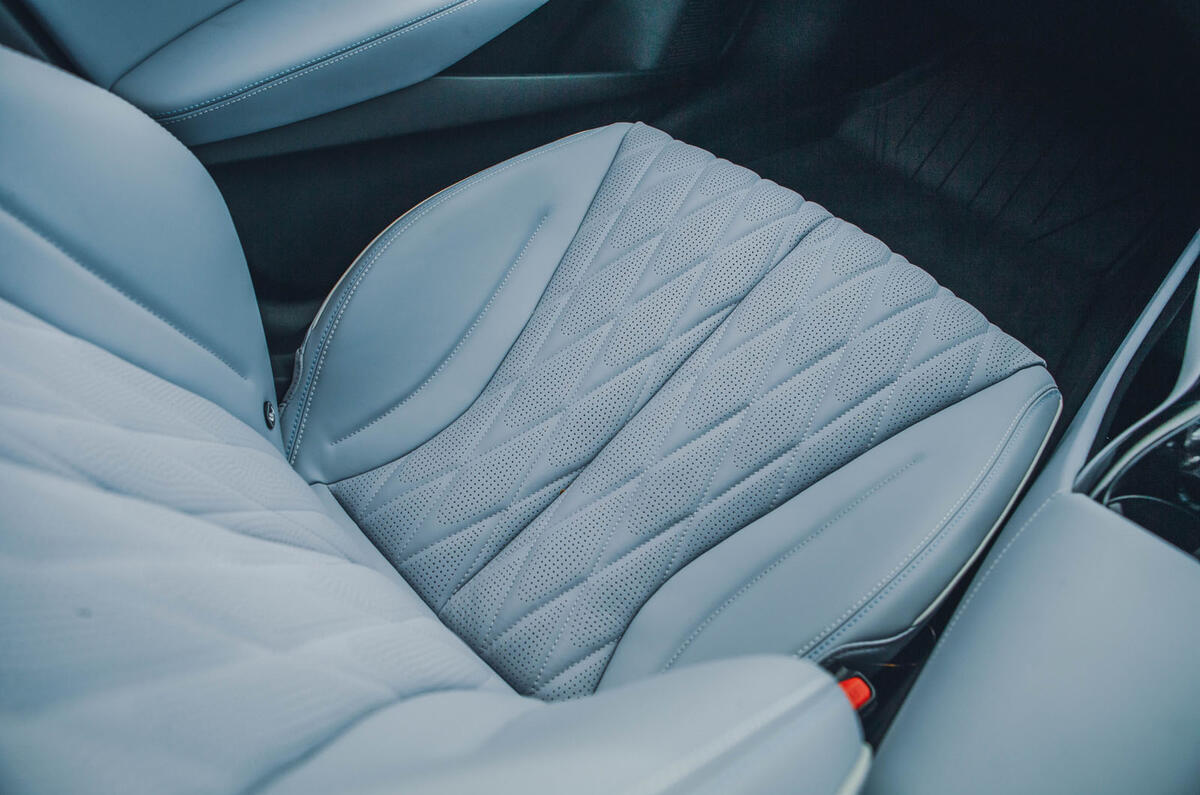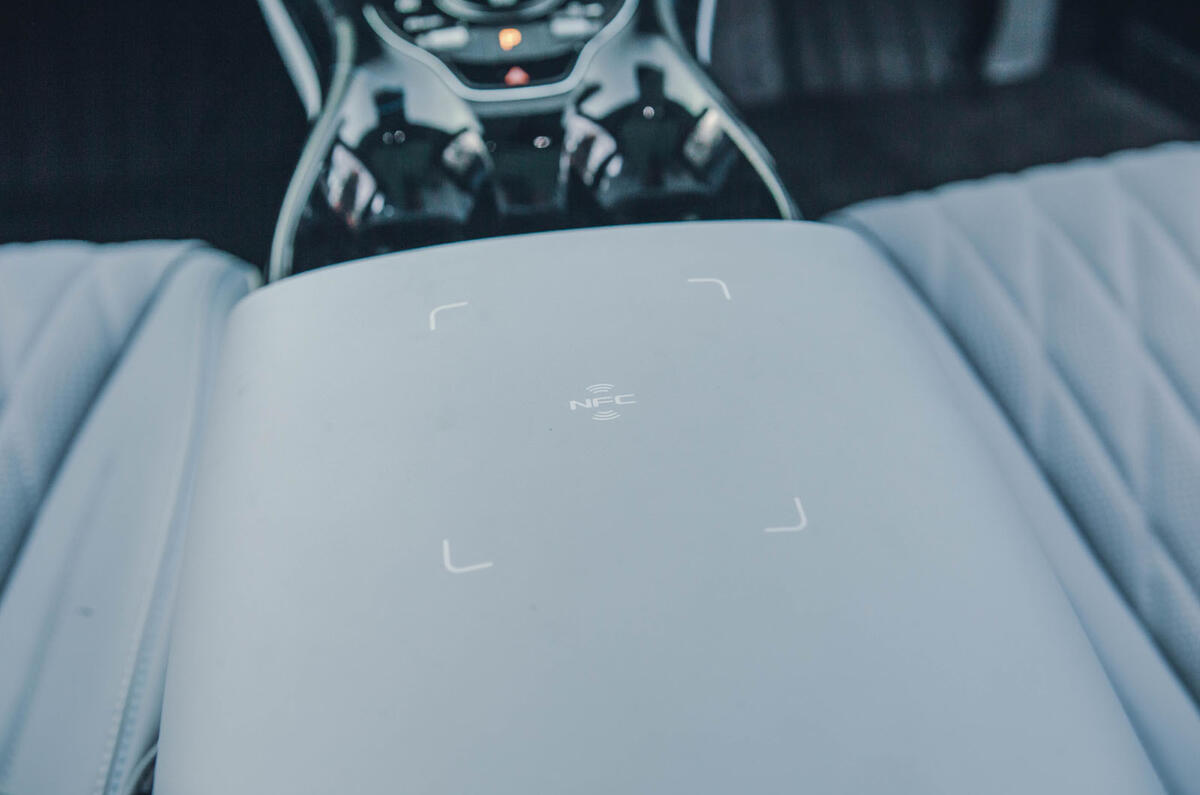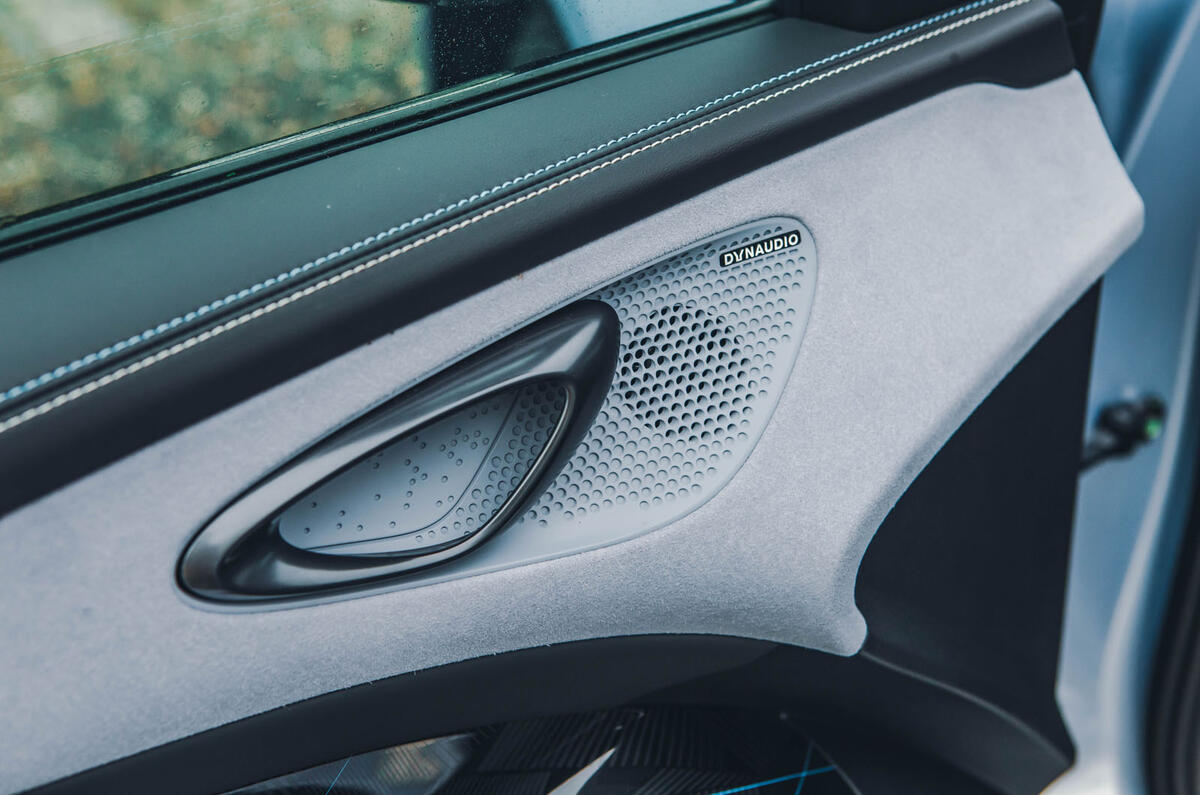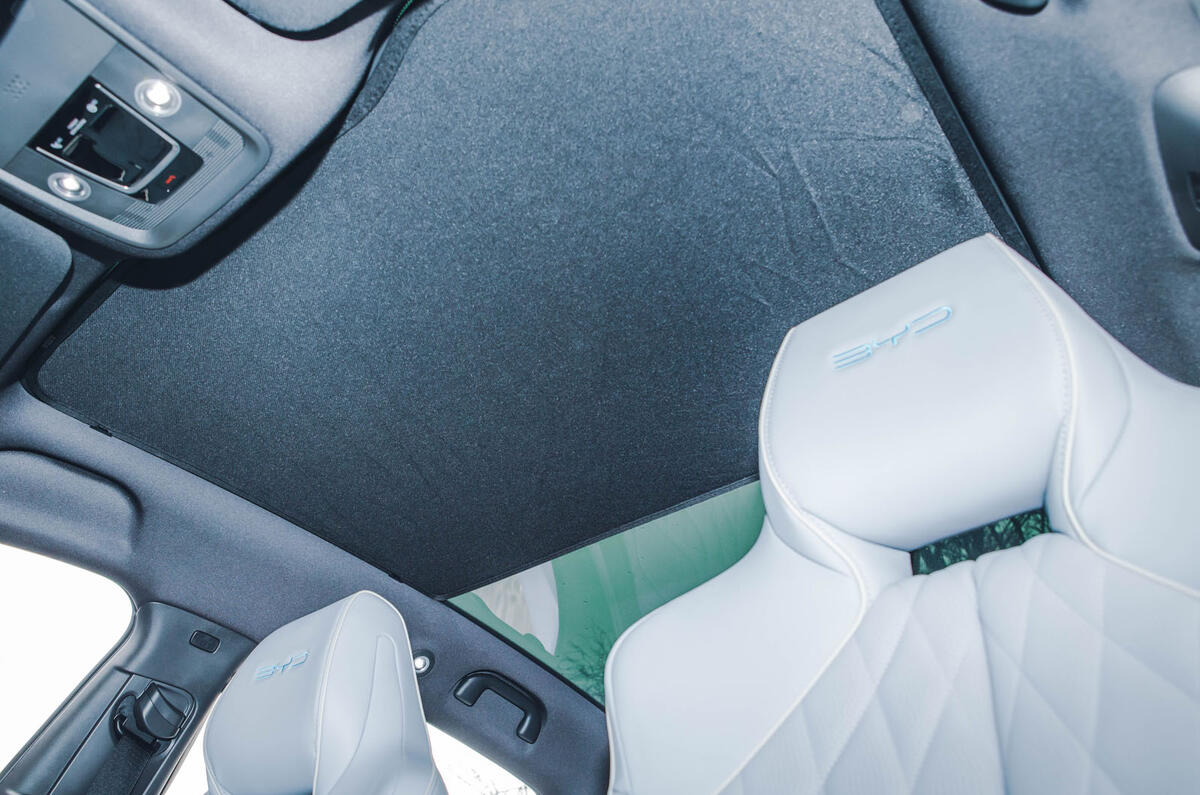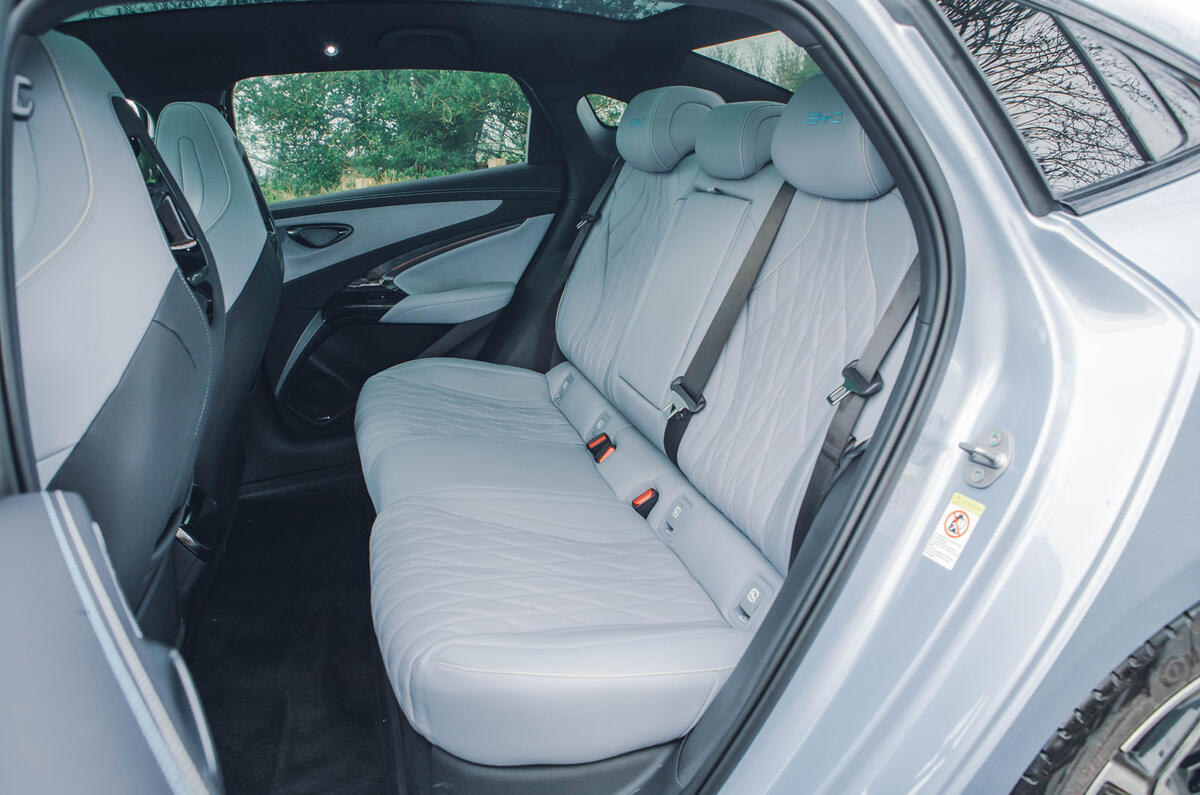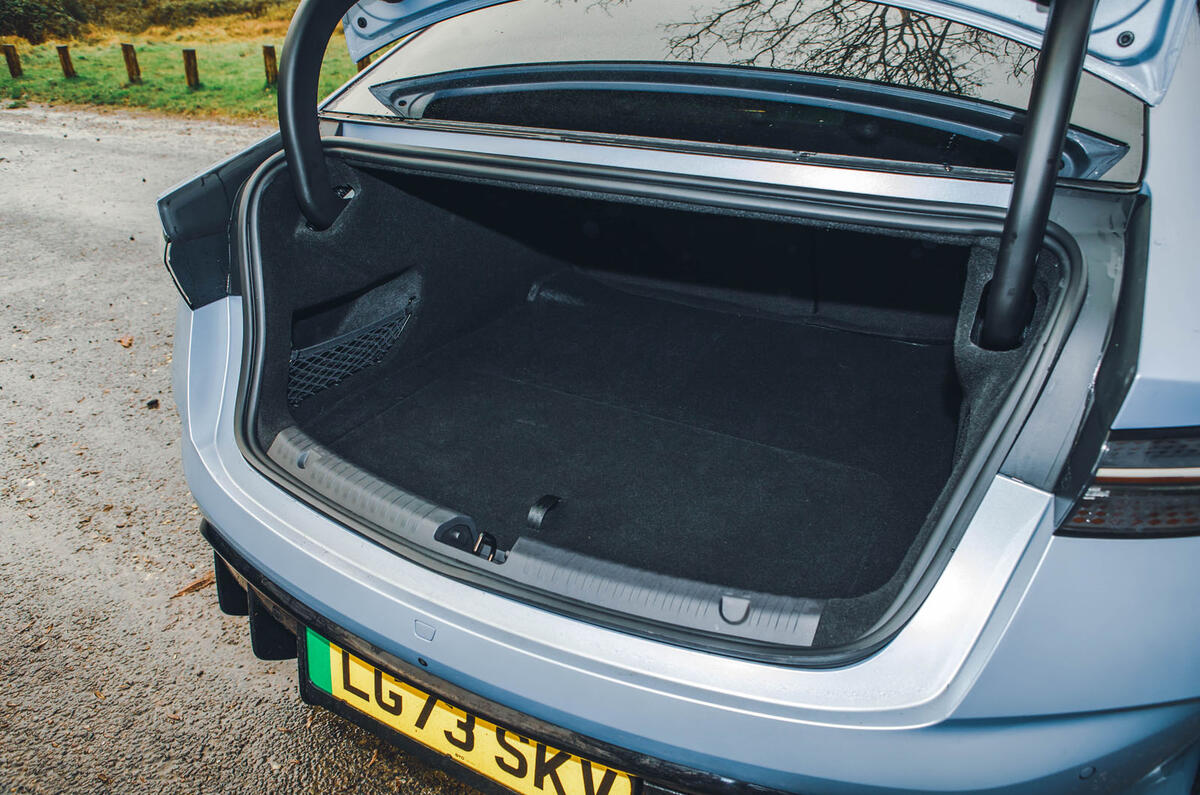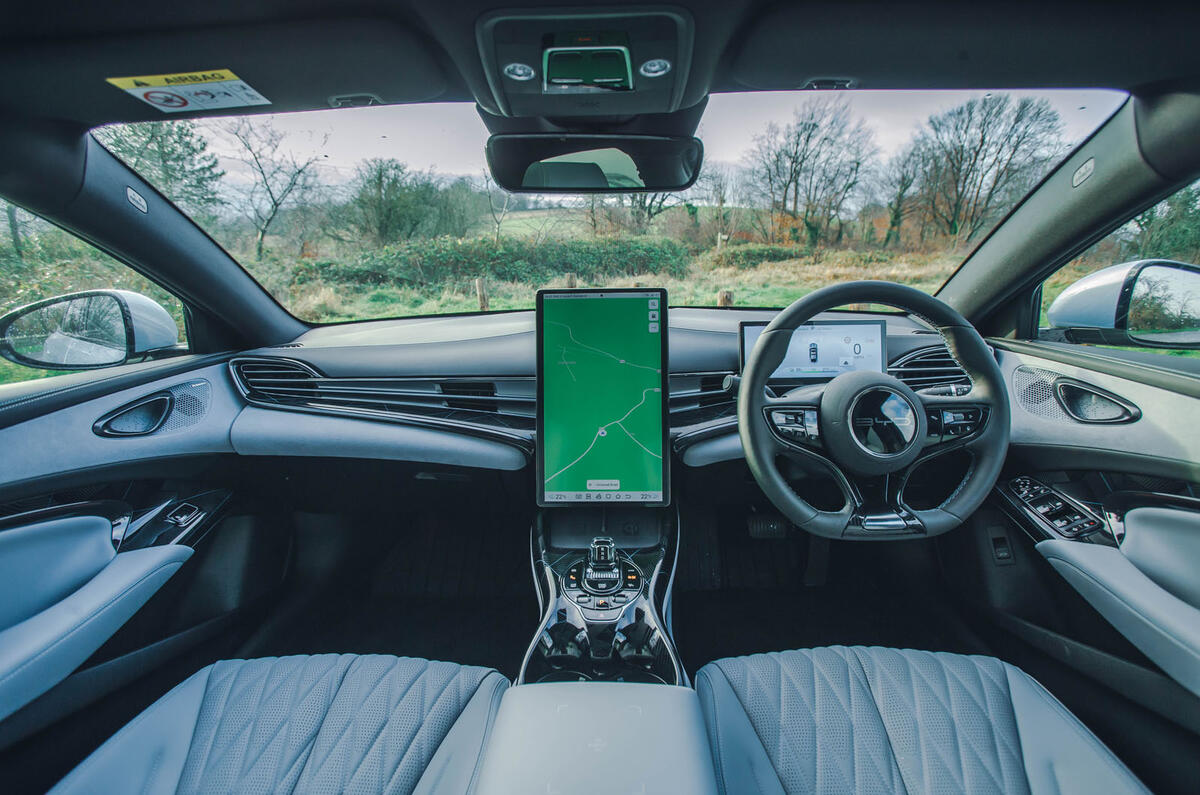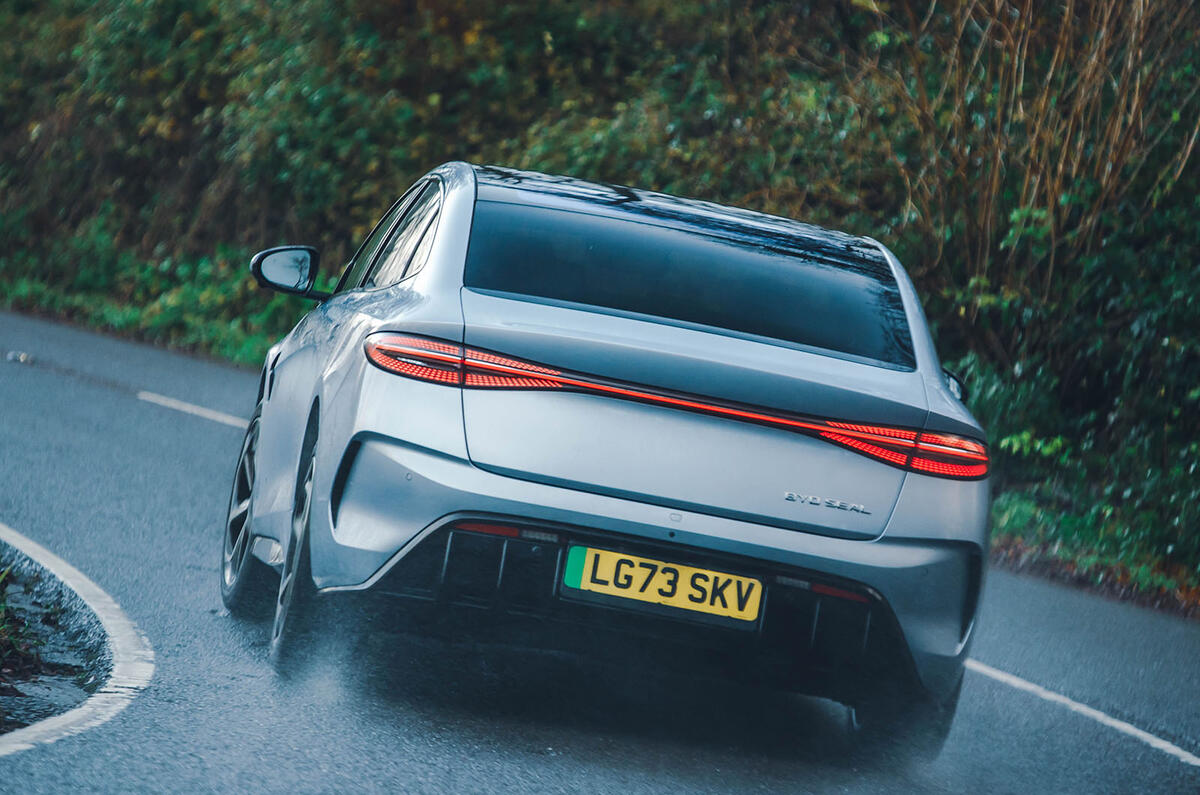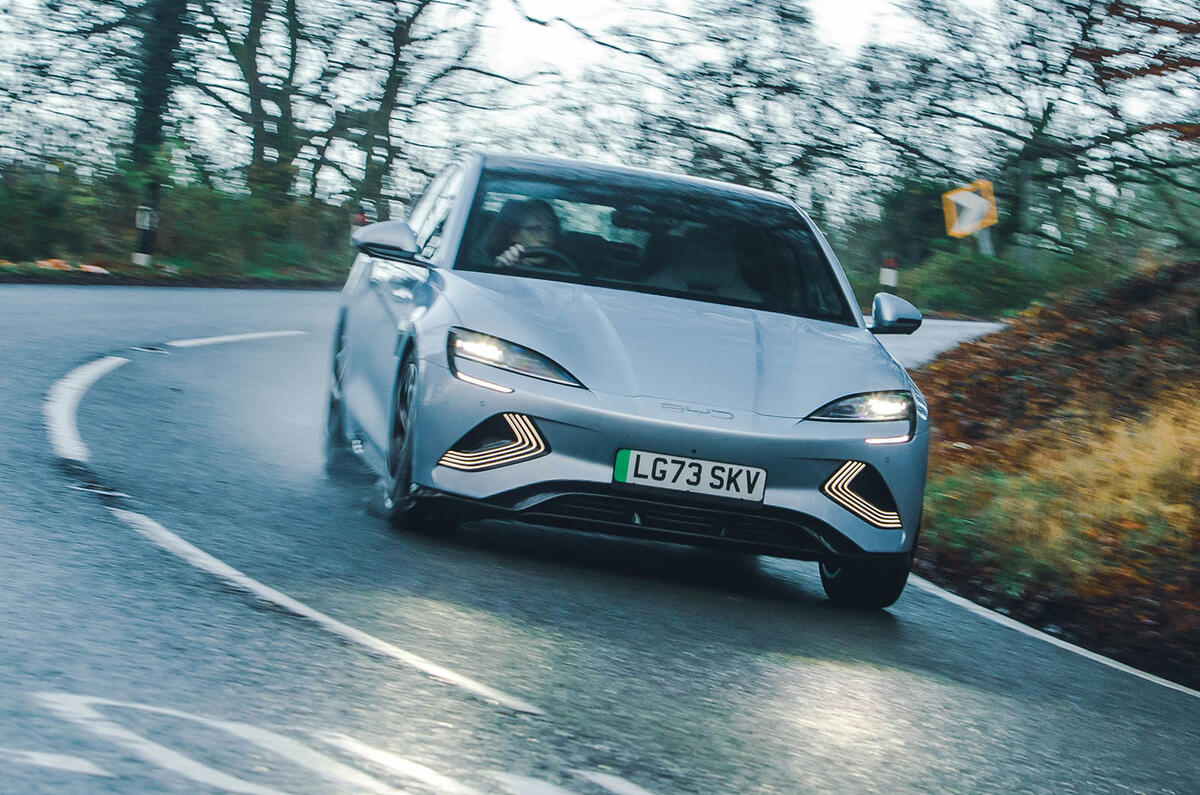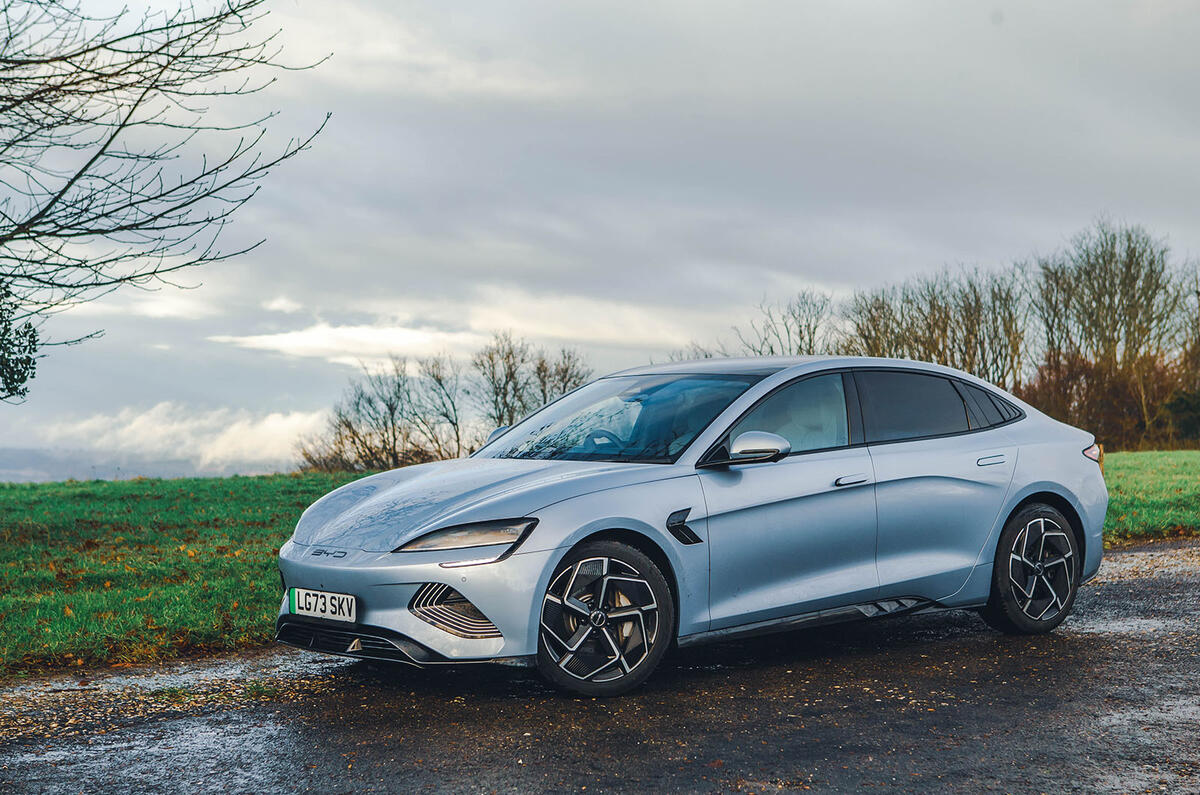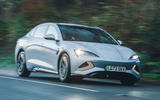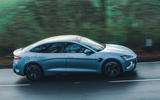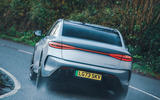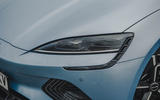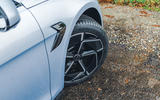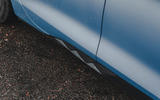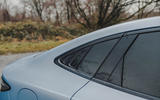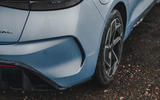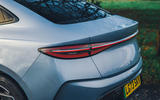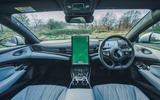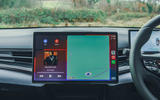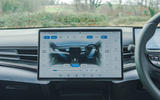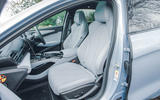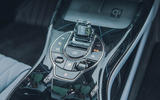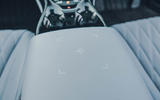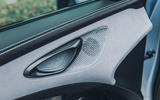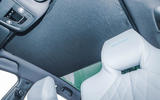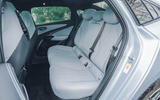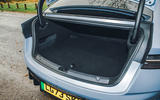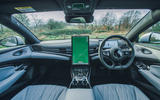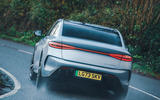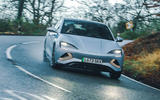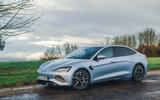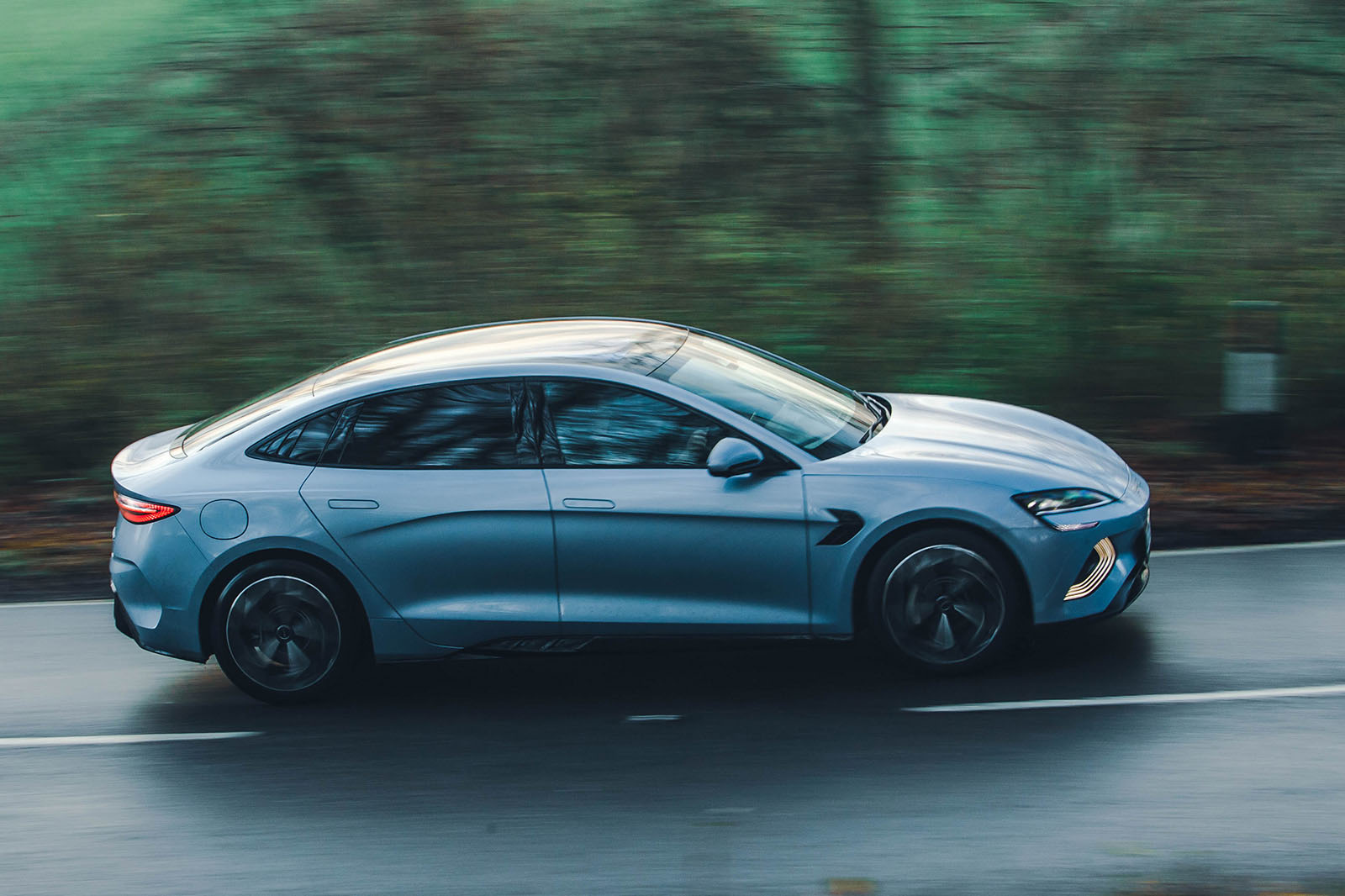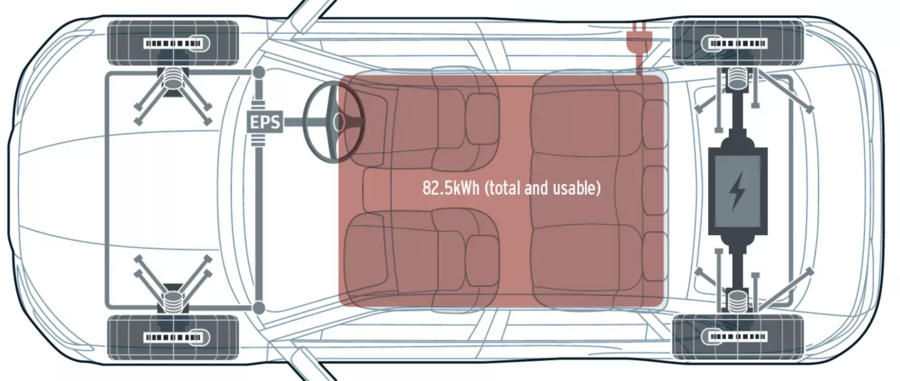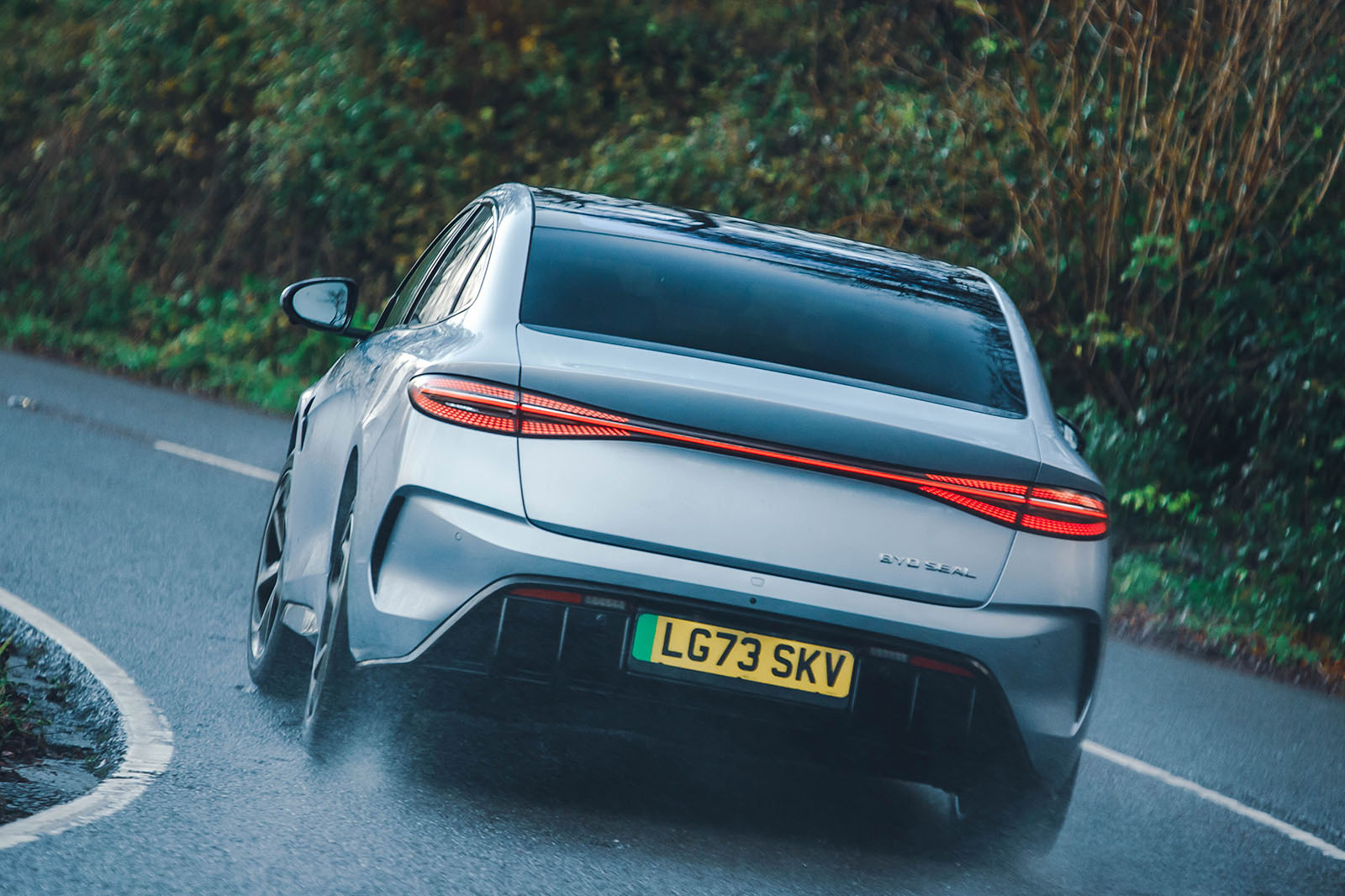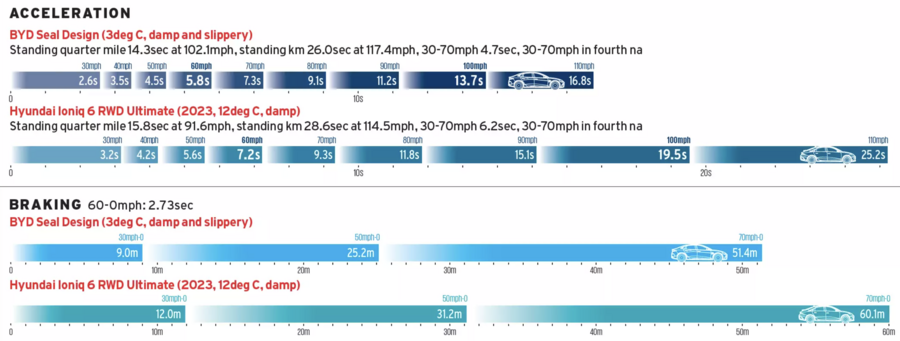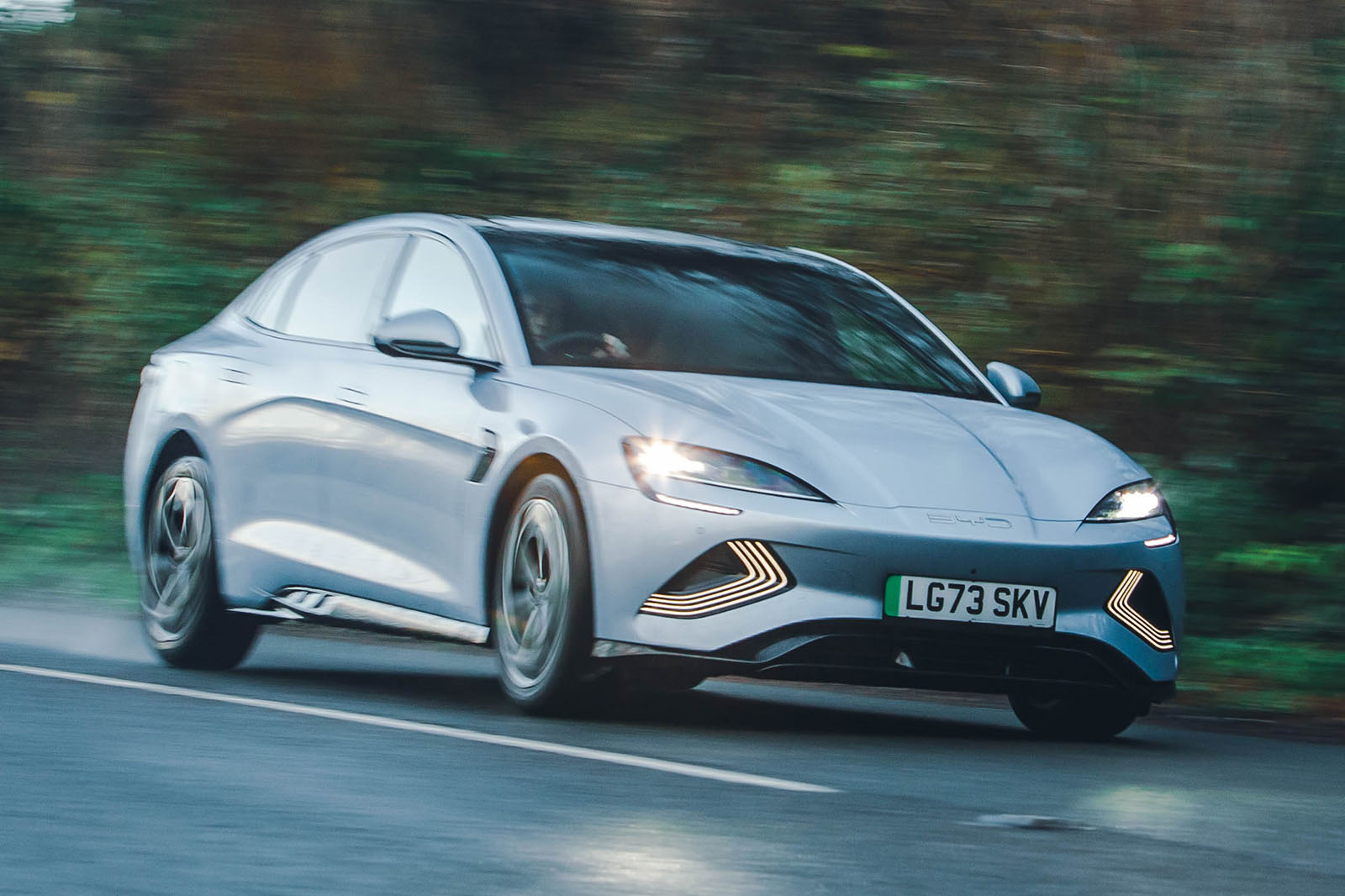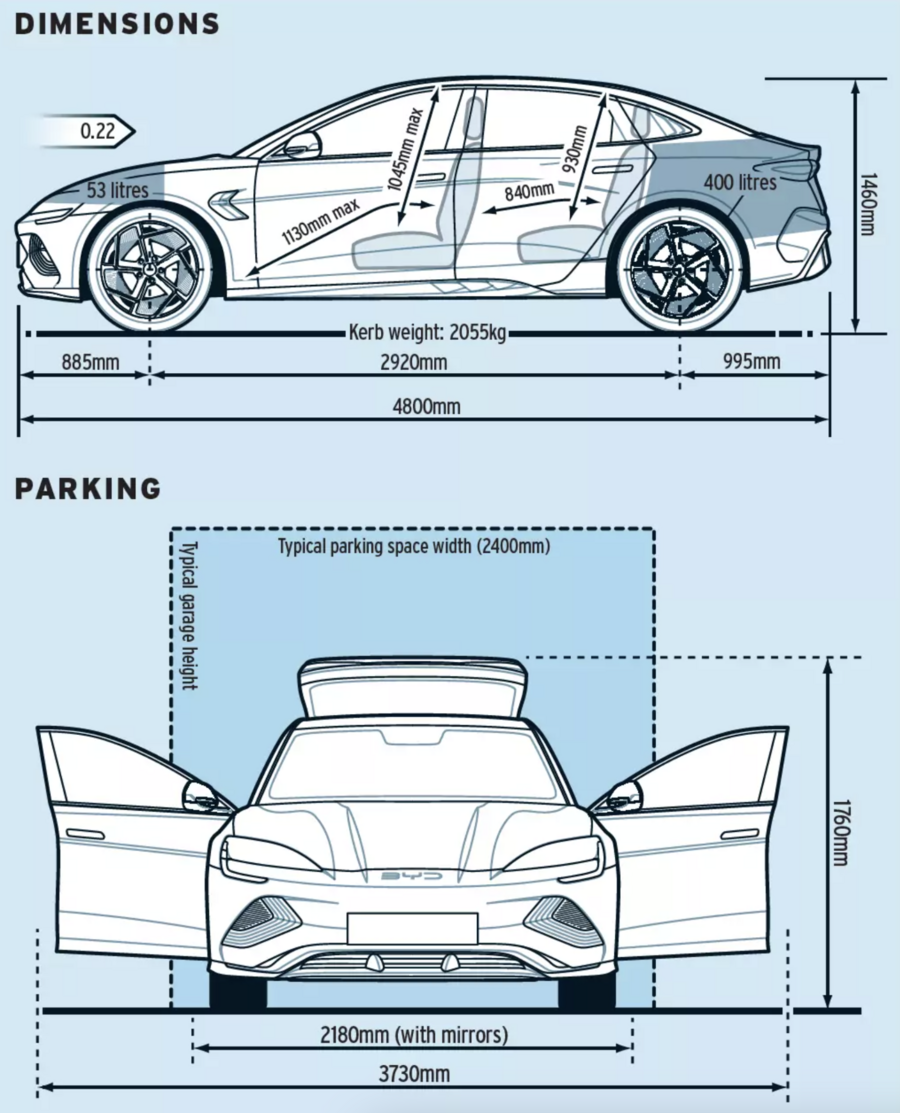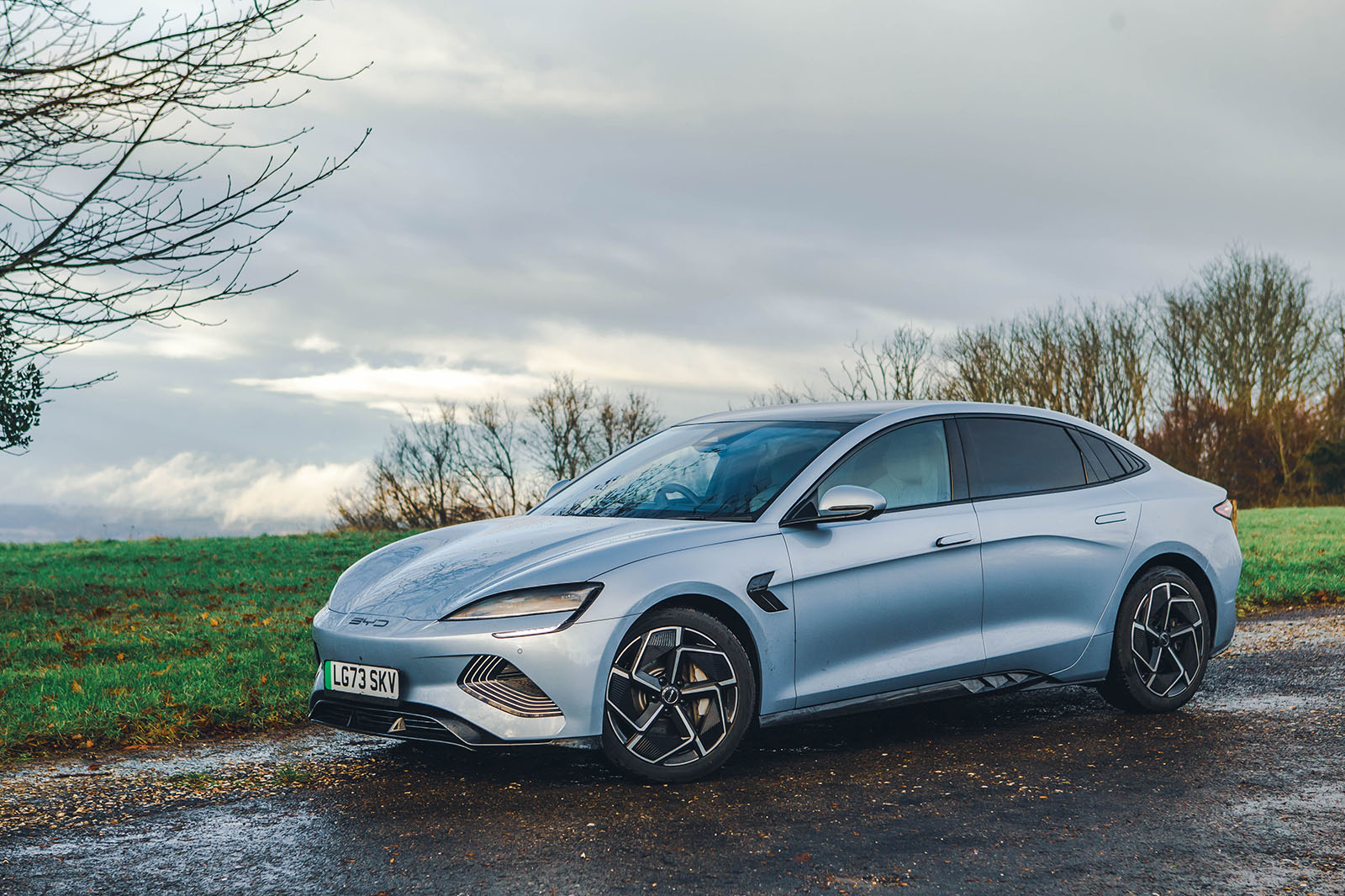BYD interiors, with their wild shapes and unusual colours, are an acquired taste but, in a world of drab black and grey rubber and plastic, are also quite refreshing.
The Seal clearly espouses the same philosophy as other BYDs. So long as you don’t mind the synthetic and slightly weird-feeling vegan leather, the Seal is a step up from other BYD cabins (which already tend to feel plusher than their rivals). Almost all of the dashboard and door mouldings are soft-touch and feel pleasingly solid, and even the gloss black plastic has been livened up with some line patterns.
If the light blue colour scheme is a bit too much for you, there is a more subdued black option. That should also be a lot easier to keep looking clean – our test car showed plenty of dirt after only a week.
The one thing that detracts from the premium experience is the smell. It’s not quite as unpleasant as in the Atto 3 and Dolphin, smelling like a weird chemical approximation of lavender, but multiple testers remarked on it.
Almost everything is controlled through the massive 15.6in screen, which can be rotated 90deg. There are a few physical controls, but the selection is odd: things like the mirror adjustment, media volume and auto hold are helpful, but the buttons for blindspot warning, mud and snow mode and climate control off could have been dedicated to more frequently used functions.
Everything else requires a trawl through the haphazardly designed touchscreen interface. Thankfully, the screen responds quickly and has crisp graphics, but almost everything is buried under several layers of menus.
To adjust the temperature, you need to swipe up from the bottom to show the controls. The heated seats require the same, plus two further taps to arrive at the right menu. And when you do that, the heated seat menu will take over the whole screen. Getting back to Apple CarPlay requires a further two taps.
You can define some shortcuts, but they don’t actually make things much easier. Voice control isn’t all that helpful either, because you need to speak extremely clearly for it to understand the most basic commands, and there are many things that it will simply tell you it cannot do. Some of the strange translations and erratic punctuation in the interface don’t help either.
The Seal’s cabin has twin wireless charging pads, some decent-sized cupholders, a deep centre armrest bin and a big tray underneath the centre console. We wish this tray was rubberised or carpeted, because when you put things in it, they rattle and slide around.
Rear leg room is slightly less generous than in a Hyundai Ioniq 6 in absolute terms, but there’s much more head room and the bench is at a more comfortable angle, so rear passengers are better off in the Seal.
Infotainment
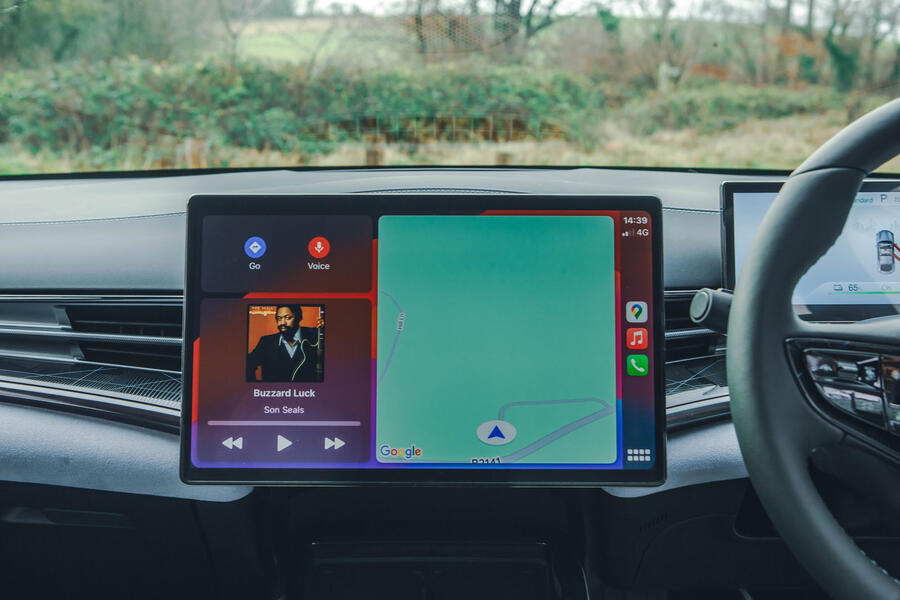
The screen’s vast 15.6in diameter and rotation function are certainly eye-catching, and following a cursory prod and swipe, one might even be impressed with the screen’s resolution and responsiveness.
However, once you start to use this interface, particularly on the move, it’s hard not to get frustrated with its convoluted structure and poor use of screen real estate. As a result, frequently used functions are buried deep in menus.
The navigation system is clear enough but sent us straight into a traffic jam. There is both Apple CarPlay and Android Auto but no wireless functionality for either. CarPlay also takes over the whole screen, rather than integrate into the native interface, and also disables the rotation function.
There’s a useful-sounding split-screen function, but it only works with the native navigation and the built-in Spotify app.
The hi-fi is by Dynaudio, a well-regarded Danish firm whose wares also optionally appear in the Volkswagen Touareg. Indeed, the Seal has warm, clear and very pleasant audio.



